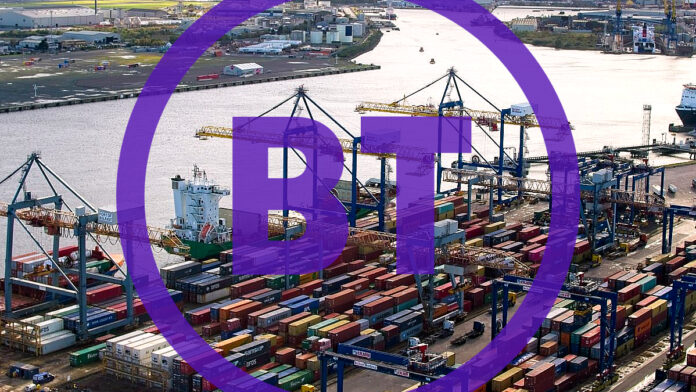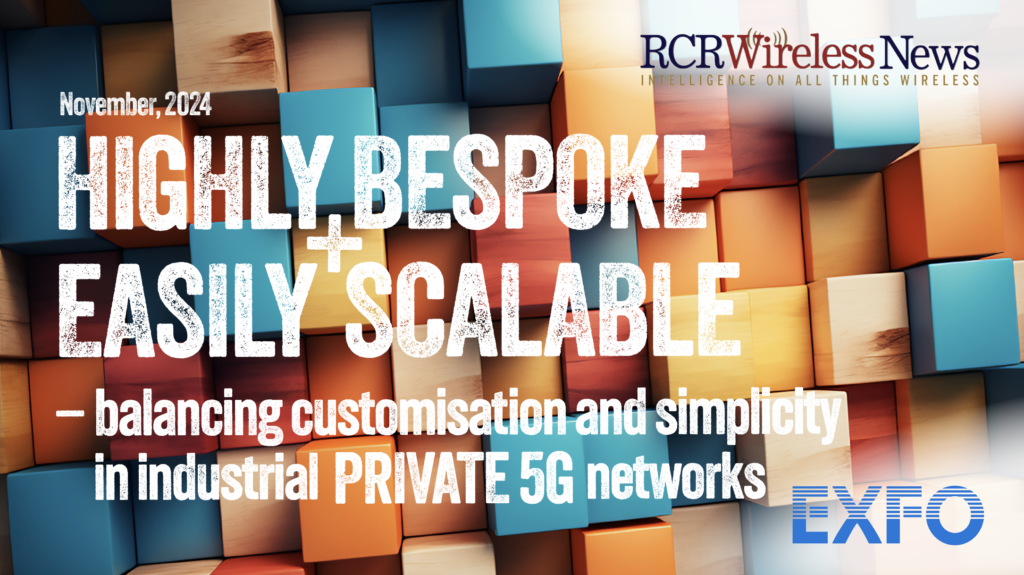There’s lots of good stuff in the new RCR Wireless report on private 5G in Industry 4.0 – which is out now, free to download, and available here. But not everyone responded in time, and not everything made the cut. Here, for example, is an extended email Q&A with Chris Keone, head of Division X at BT Business. It is a good conversation – candid and considered – and worth reporting in full. The below quotes are all from Keone.
What’s new? Can you give an update on BT Business in the private 5G market?
“BT has been actively expanding its presence in the private 5G market, particularly with verticals that have large open outdoor spaces, like ports, airports and construction sites. These networks are designed to support a wide range of industrial applications, from smart manufacturing to logistics. As an organisation, we’ve also been undergoing a major transformation: modernising from the ground up to benefit our customers and the wider economy.
“We’re doubling down on core connectivity, so we can solve the problems customers are facing today, and the ones coming down the track tomorrow. This is where private 5G networks fit in – they’re an important solution for us, but they’re just one part of what we do. Our unique strength is in our networks, and we’re leveraging all of them (public, private, fixed and cloud) to meet customers’ needs.”
Who are you working with – in terms of the whole supply ecosystem?
“We’re collaborating with a comprehensive ecosystem of partners, including various technology providers, cloud service providers (such as AWS), IoT device manufacturers (like Arrow and Zebra), and cybersecurity firms to enhance the security of 5G networks.”
Has much changed in the last six months (through 2024)? In terms of culture, collaboration, understanding, solutions, verticals, applications etc?
“For us, 2024 has been about putting the new strategy for [BT] Business into action: focusing on what we’re best at and moving fast to modernise our processes and our networks. The reality is that every business is now a digital business, regardless of location, size, product or service. Our strategy is about focusing on the rock-solid network foundations enterprises need to thrive.
“This means leveraging core platforms by moving away from legacy infrastructure to networks that are fit-for-the-future, as well as radically simplifying our own business and focusing on the outcomes that will provide tangible benefits for our enterprise customers. Private 5G networks are a great example of one solution which can unlock an array of opportunities for our customers, and it’s an area that we’re continuing to invest in as greater awareness spreads of the positive and future-proof use cases.”
How easy are sales (how easy is scale) – to new customers / sectors / geographies? Are they any easier? Why is this?
“While there is a growing recognition of the benefits of private 5G networks and the foundation they can provide, the reality is that no one rings up BT and asks directly for a private network. They ask for connectivity to help solve a problem. A private network itself is not a solution that businesses are typically aware they need.
“However, they do come to us with a variety of pain-points and challenges that private networks can help solve – like the need to connect devices with lower latency, faster speeds or greater security in a complex environment. This is where we are seeing impact: the ability to offer dedicated network performance, reliability, and data security has been a significant selling point.”
How are customers using your private 5G systems / solutions? Are they scaling-up applications and use cases? What is the pattern, and why?
“The space we’re seeing most interest from is ports. There are plenty of opportunities in this market, with hundreds of possibilities to optimise operations. Belfast Harbour is a good example, as the first port in the UK and Ireland to build a 5G-integrated ecosystem with a private network as the foundation. Applications include hands-free, augmented reality headsets that allow users to receive real-time video guidance as they work.
“However, we’re also seeing customers using private 5G networks for a variety of other applications. Initially focused on wide area outdoor coverage, there is now a growing trend towards integrating IoT solutions, automation, and machine-to-machine communication. Applications like smart sensors to monitor traffic, or automated goods-tracking systems are becoming increasingly common. This shift is driven by the need for real-time data processing and enhanced operational efficiency – which isn’t possible without a foundation of strong connectivity.”
Are customers going beyond connected workers (people), as a primary use case? Is there much doing in terms of IoT / automation / machines / systems etc?
“Customers are certainly moving beyond connected workers as the primary use case. IoT, automation, and machine-to-machine communication are being used often for optimising operations and driving efficiencies in various industries. Customers are also increasingly using private 5G systems to scale up applications. There is a growing need to use 5G for asset tracking, predictive maintenance, connected sensors, real-time data processing and automation. This trend is driven by the need for ultra-low latency and reliable connectivity in industrial environments.”
What is the BT Business strategy with regards these two points – about scaling upwards and outwards? How is it developing?
“Again, our strategy is about focus. We’re focusing on what we’re best at – which means leveraging the networks that carry our customers’ data to deliver clear outcomes against their business goals. Focusing more on what we do best also means working with others where we know partner solutions will work better on BT for customers. Scaling outwards requires collaboration to be front and centre. From a private networks perspective, we’re focused on both enhancing existing home-grown applications and expanding to new use cases and industries.”
What are the blockers today? What blockers have been removed in the past six-to-12 months?
“The challenges facing private 5G vendors and integrators in industrial sectors are significant. Balancing the need for unique, purpose-built solutions with the ability to scale and replicate these systems across various applications and venues is crucial. Regulations and the complexities associated with integrating new networks with existing businesses can provide challenges, as can the maturity of business cases from customers to underpin the investment required. However, we’ve made significant progress in the past six to twelve months, particularly in simplifying integration processes.”
Is there confidence now within the enterprise market? Is this because early-adopters in their industries are making a difference? Is it because of the hype around AI?
“There is growing confidence in the enterprise market. AI is seen as a key driver for future developments, enabling more intelligent and efficient network management and application deployment. Yet we still have a long way to go in the UK before this reaches a saturation point. Whatever the application, the proof comes as technology solves problems. As more customers recognise that investing in private 5G will drive significant operational benefits when compared to IT transformations in isolation, attitudes will go from “we can’t afford to do this” to “we can’t afford not to do this.”
What is the BT take on AI – today and tomorrow? How does this drive things – conversations, solutions, sales?
“We know customers are worried about the evolution of technology – AI is one of the top concerns for business leaders facing modernisation demands. We all need to ride this wave of digital evolution or face getting left behind. Our role at BT is to provide a foundation for businesses to benefit from tech. We’re the sandbox for enterprises to build, test and learn. It’s only with a stable, secure and sustainable digital foundation that customers can reap the benefits of AI in a reliable and scalable way.”


